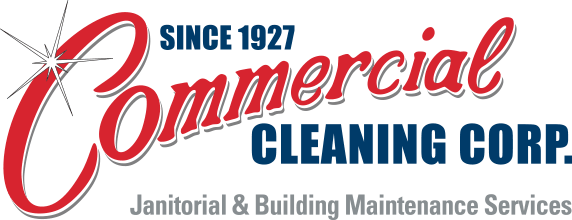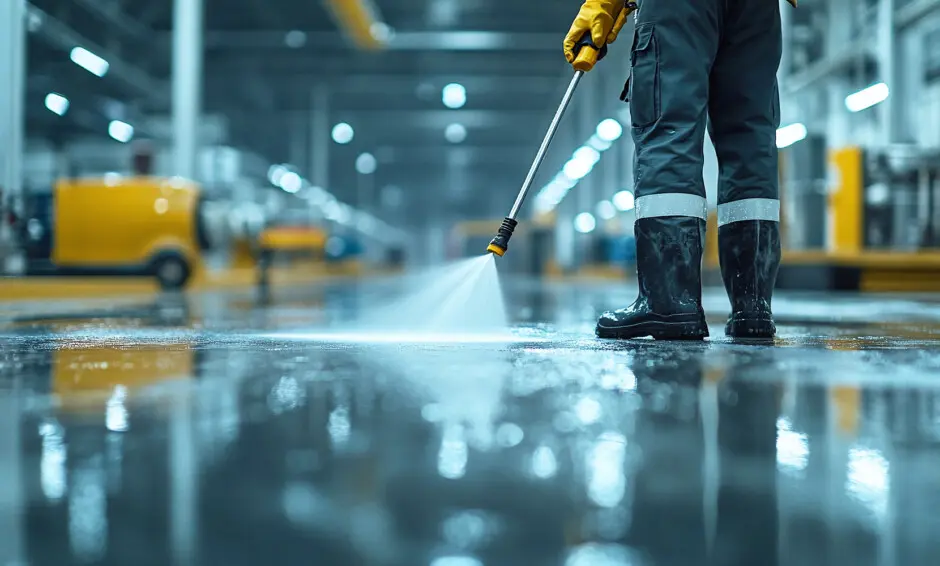A solid industrial cleaning schedule is the backbone of a safe, efficient facility. But what if your current schedule (or your commercial cleaning provider) isn’t quite getting the job done? Industrial environments are complex and fast-paced by nature, and cleaning protocols that once served your needs well may no longer be sufficient.
Routine reevaluation is key. When left unaddressed, lapses in facility cleaning frequency or effectiveness can lead to health and safety risks, regulatory citations, and even production disruptions.
Here are five clear signs it’s time to revisit your industrial cleaning schedule to keep your facility productive and profitable.
1. Visible Buildup Is Becoming the Norm, Not the Exception
When dust, debris, or spills start becoming a regular sight on floors, machinery, or surfaces, it’s a clear red flag. These visual indicators are often the first signs that your current cleaning cadence isn’t aligned with your facility’s operational intensity.
In high-traffic areas like production lines and loading docks, grime can build up rapidly, especially in facilities running multiple shifts or operating around the clock. If your facility is consistently dirty just a day or two after scheduled cleanings, it’s a signal that your warehouse cleaning plan isn’t keeping pace with your workload.
And what starts as cosmetic degradation can quickly become a safety concern. Dust accumulation, for example, can pose a big fire hazard, and oily residues on floors increase the risk of slip and fall incidents.
Learn how a proactive approach to cleanliness can even support supply chain efficiency in our blog The Clean Supply Chain: The Value of Warehouse Cleaning in Logistics.
2. Employee Complaints or Safety Incidents Are on the Rise
Your team may be the first to notice when cleanliness starts to slip. If you’re fielding more complaints about the condition of restrooms, breakrooms, locker areas, or workstations, it may be a symptom of insufficient cleaning frequency or thoroughness.
Worse yet, an increase in minor accidents or near-misses, like slipping on floors, tripping over trash, or falling ill due to unsanitary conditions, should raise serious concerns. Poor housekeeping is a frequent contributor to workplace accidents and violations. The Bureau of Labor Statistics identified 885 fatal work-related injuries in 2023 were due to falls, slips, and trips.1
Many of these accidents can be prevented through more rigorous and consistent warehouse cleaning routines. If you’re seeing rising incident rates, it’s time to reexamine how, and how often, your facility is cleaned.
3. You’re Preparing for a Major Audit or Inspection
Whether it’s an internal quality audit, a client walk-through, or a government inspection, these events require more than just a quick cleanup. Auditors and inspectors often look at housekeeping as a reflection of overall operational control, safety compliance, and risk management.
In fact, OSHA inspectors may cite a facility for poor housekeeping under the General Duty Clause2 or specific standards related to hazard prevention. Even beyond OSHA, certifications like ISO 9001 or client-specific audits often include cleanliness and environmental control checks.
If your current cleaning schedule doesn’t already build in more robust service ahead of these milestone moments, you might be leaving yourself exposed. A commercial cleaning provider who understands audit-readiness should proactively recommend deep cleaning in advance. If they’re not, that’s another sign it’s time to rethink your cleaning strategy.
Get audit-ready with tips from Deep Cleaning for Peak Performance: Preparing Your Industrial Facility for Audits & Inspections.
4. Quality Control Issues Are Traced Back to the Environment
Environmental cleanliness doesn’t just affect safety. It can directly impact the quality of your products. Airborne dust can contaminate sensitive production processes. Unclean surfaces can compromise packaging or inventory. Spills and residue may create variability in batch production or even lead to product recalls.
If your quality control team is documenting repeat issues that are linked to environmental factors, that’s a strong indicator your cleaning schedule isn’t protecting product integrity.
In this case, simply adding more cleaning isn’t always the answer. You’ll need the right type of cleaning at the right frequency, using appropriate tools and trained professionals who understand your industry’s regulatory and process demands.
Explore cleaning strategies that directly support your workplace in Warehouse Cleaning Strategies to Reduce Liability and Improve Safety.
5. You’re Scaling Operations But Not Cleaning Enough
Has your facility recently expanded hours, increased staffing, or added equipment or square footage? It’s a common oversight to scale production without reassessing cleaning protocols.
More personnel means more restroom use, more foot traffic, more packaging waste, and more potential for contamination. Likewise, a growing inventory or shipping volume often brings more dust, debris, and material residue into the workspace. Yet warehouse cleaning schedules are often left unchanged, creating a growing disconnect between what your facility needs and what’s being delivered.
Failing to adjust your cleaning plan in sync with operational growth can slowly erode your facility’s performance, staff satisfaction, and even your brand reputation. That’s why cleaning should be seen as a scalable solution, not a static task.
What a Reevaluated Cleaning Schedule Looks Like
If any of the above signs apply to your facility, it doesn’t necessarily mean your cleaning provider is falling short. It may simply mean it’s time to adapt to a new phase in your facility’s lifecycle. Here’s what an updated cleaning schedule should consider:
- Production Schedules: Cleaning timeframes that align with shift changes and downtime.
- Seasonal Demands: Adjusted protocols to address pollen, humidity, winter slush, etc.
- Facility Zones: Cleaning cadences for production, office, breakroom, and restroom areas.
- Hazard Identification: Plans that account for spill-prone areas, dust-generating activities, or chemical storage zones.
- Documentation: Service logs and checklists that support audit compliance and accountability.
Partnering With the Right Cleaning Provider
A qualified industrial cleaning provider knows how to anticipate your needs. At Commercial Cleaning Corporation, we offer tailored cleaning programs for industrial and manufacturing facilities across New Jersey and Pennsylvania. We understand that no two facilities are alike, and that your cleaning schedule should evolve with your operations.
Whether you’re reacting to a sudden uptick in safety concerns or planning for long-term growth, our team can help you reassess your current plan, identify gaps, and build a schedule that works for your environment, budget, and compliance goals.
Let us show you what a responsive, consultative cleaning partnership looks like. Contact us today to request a facility walkthrough or custom cleaning assessment.
Sources:
1. Injuries, Illnesses, and Fatalities IIF Latest Numbers, U.S Bureau of Labor Statistics
2. OSH Act of 1970, General Duty Clause, Occupational Safety & Health Administration


One thought on “5 Signs It’s Time to Rethink Your Facility’s Industrial Cleaning Schedule”
Comments are closed.